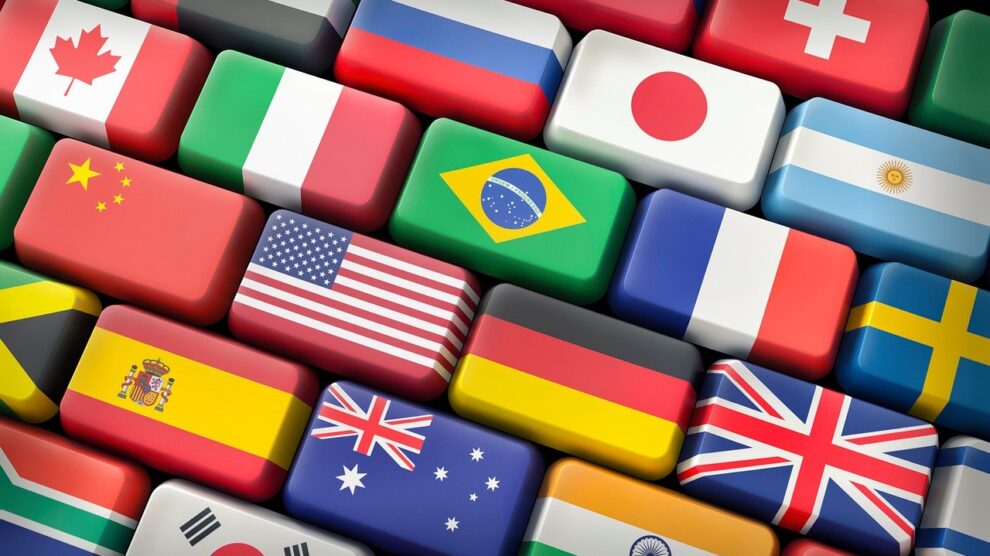Entrepreneurs, consultants, marketers, and advertisers have all been faced with the duplicate content issue and what it means for your website’s search engine optimization. This question has bothered many people for ages and it’s not news that the discussion seems to be nowhere near being over.
However, there is also a flip side to this issue. What about translation? Is it still duplicate content, if it is simply a translation of the original piece? And what do Google’s bots think of it? What will be the consequences of having duplicate content on your website? These and other questions will be answered in our article.
What Is Duplicate Content?
The first step to avoiding the duplicate content issue for Google is to understand what duplicate content is. As defined by Google, duplicate content is made up of “substantive blocks of content within or across domains that either completely match other content or are appreciably similar.”
So, if you directly copy content from a different website and publish it on your own site, it will be considered duplicate content. That being said, two pages of your website that have the same or similar pieces of content will also be considered duplicate. However, using a quote or citation a paragraph or two long will not do you any harm.
There are websites that republish news reports, press releases, and so on from other websites which usually have more authority and rank higher. Such republishing websites are detected by Google and not given any good treatment as they simply don’t have original content or the majority of the content they have is duplicate.
Of course, there are some exceptions to the duplicate content rule. For instance, product pages. Your product pages will most likely be very similar especially if you have similar products. Google sets these apart and doesn’t consider them to be duplicate content so your SEO doesn’t suffer.
Penalties for Duplicate Content
The problem with duplicate content is that there are many opinions on whether or not you get penalized for having a lot of it on your website. Some experts say that you should avoid duplicate content like the plague while others argue that it’s a myth and you can use it all you want. The truth, however, is probably somewhere in the middle.
Google doesn’t like using the word penalty and they don’t really apply penalties to anything. As explained by John Mueller in this video, Google doesn’t have a penalty for duplicate content. Even if your site is full of duplicate content, it won’t be demoted.
What this means is that if you have a lot of duplicate content, you will not get any direct punishment. But Google will not want to rank you and will instead avoid your site which will indirectly affect your rankings. So yes, this could be considered a form of penalty if you really want to call it that. The point is that no matter what you call it, duplicate content will still do your site more harm than good (if any good at all).
This is definitely also a problem for online store owners who are selling the same products on different domains. The problem is that you would most likely not change your product pages at all resulting in a lot of duplicate content (and in this case product descriptions would indeed be considered duplicate content). Instead of dominating a niche, you now have extremely low rankings.
One thing to remember is that the pages that used to rank well but were copied elsewhere may also lose their rankings. It’s not only the one who duplicates that suffers, but also the one whose content was duplicated. And that totally isn’t okay.
Of course, there are some professionals like Andy Crestodina from Orbit Media that argue that we are all overreacting and the reality is different. He says that Google bots find pages with duplicate content every day, but they know what the original source was. Why would Google want to penalize the original? The bots probably simply move on without ranking the duplicate content but also without de-ranking the original.
Nothing is entirely clear, but one thing you now know for sure: duplicate content is best avoided. But what about translations?
How Can Translations Help?
To put it simply, translations are not considered as duplicate content because they are written with a different audience in mind. Matt Cutts, who is the head of the webspam department at Google, explains as much in this video. An English version and a French version of the same text will be considered two different pieces of content by Google.
But, of course, like with anything else, translations do have some nuances that must be remembered if you don’t want to end up with actual duplicate content on your website.
First of all, translations need to be written by humans rather than being generated by machines. Auto-generated translations are terrible and are no better than duplicate content. If you have ever used Google Translate, you know what I mean. Most of the time it just sounds like gibberish with no regard to grammar or logic.
Moreover, such translations are not optimized for search engines. If you hire a professional translator from an online agency like The Word Point, you will get a translation of the highest quality with all the linguistic and cultural nuances taken into account. And, of course, SEO will be in place.
Another detail about translations is that it is best to publish them on a separate website that is tailored to the specific region you are targeting. When you create an English website, you will be aiming your content at an English-speaking audience, but a Spanish-speaking audience will be looking for a different ‘message’. It’s better to have a Spanish version of your site on a similar domain.
According to Richard Michie from Global Lingo, such websites can still have a problem. If you want to have several versions of a Spanish website, one for a Spanish-speaking audience in South America and another for an audience in Spain, then you will need to tell Google that the sites are not duplicates. This is simple though since it only requires that add a special line of code in the headers of your websites that will tell Google bots that these sites are the local versions of the original.
If you complete all these steps, your translations will not be considered duplicate content by Google. Nevertheless, let’s talk about some other tips and tricks you can use to improve the SEO of your website.
Translation and SEO Best Practices
Translations still require you to complete some actions in order to make the SEO aspect function properly. Here are the top practices to use:
- Crawling Sites in Different Languages: Google can’t rank your pages in other languages if it can’t crawl and index them. You need to optimize each website version of each page on that website in a way that will allow Google bots to do their job well. It should be your top priority if you are really serious about SEO when it comes to translations.
- URL Structure for Different Languages: There are different ways you can go about structuring your URLs for different languages, but there are also some specific tips Google has regarding this matter. It is recommended that you choose one of three options: subfolder for each language, subdomain for each language, or country-specific domain. Google does not recommend using URL parameters. The country-specific domain option is probably the most favorable here as it lets you and your visitors have more comfort when managing or accessing the different versions of your site (e.g. yoursite.com for English-speaking users, yoursite.ru for Russian-speaking users, yoursite.de for German-speaking users, etc.)
- Avoiding Slugs (Especially in WordPress): Some plugins don’t let you translate the URL slug for each individual post or page. This results in your multilingual site visitors seeing URLs in English rather than in the language of the site version they are accessing. URL slugs are important for SEO because you can include your primary keywords in them. This is why you need to find a plugin that will allow you to translate your URL slugs.
- Specifying the Primary Language: By adding the hreflang attribute, you let Google know which site has which language. This code is not seen by your visitors and can be placed somewhere on each of your sites. It helps Google point searchers to the most relevant translated version of your website based on their location and search history as well as language preferences.
- Creating a Multilingual XML Sitemap: An XML sitemap is a very good SEO practice that helps both you and Google in different ways. You have a map of all of your content and how the different pages are related and Google bots have an additional source of information about your website allowing them to crawl and index your sites better. When it comes to multilingual XML sitemaps, Google actually has specific requirements about how you should format them.
- Configuring Titles and Meta: Titles and meta descriptions are what show up when searchers look for information by using a search engine. This is why titles and meta descriptions should be taken seriously no matter which version of your site you are working on. Just like the content on your site, these should be translated and added to each page accordingly.
- The International Targeting Report in Google Search Console: The Google Search Console is an invaluable tool that has lots of functions to control your site and access insight about its performance. There is also an additional tool for international targeting that you can use for the multilingual content you publish.
- Content for Different Countries: The problem with translating content (even when it is done by humans and not machines) is that the keywords you used in the original may not be the same you must use in the translation. Different languages usually do not have direct translations of commonly used phrases, so you will need to research this aspect of your content or ask your translator before publishing the finished piece.
- Localization for Different Regions: While translation is important, you should not forget about localization. Going back to the Spanish example, the people in Spain may be using different words than those used by people in South America to name the same thing. It’s like soccer and football. It’s the same thing, but people in different parts of the world speaking the same language will have different names for it.
- Cultural Implications and Messaging: This has been noted before, but it deserves a separate section. What may be considered normal in one country may be completely inappropriate in another. When you translate your content, or even better – when you first write it, you should keep in mind the different mindsets and social norms people in different countries have. Moreover, it’s good to remember your messaging too. What are you trying to say? Your audiences from different countries may feel that these issues are irrelevant to them or simply outdated.
- Strategy, Campaign, and Research: Lastly, you want to know what you are doing. You need a clear plan, a strategy for your digital advertising campaign. You don’t want to be “going with the flow” as this tactic is usually not that effective. Do your research beforehand and know what each of your audiences wants. What kind of problems do they have, which keywords do you need to rank for, and so on. This is something so simple yet site owners who choose to translate their content often end up forgetting about it
Final Thoughts
You consider all of this to be down to the circumstances and the situation, but it’s actually much broader and can be applied more generally to various cases. Duplicate content is not something you should be scared of much, but it’s best to avoid it. Translations are one of the solutions to this problem, so definitely consider taking this route.





